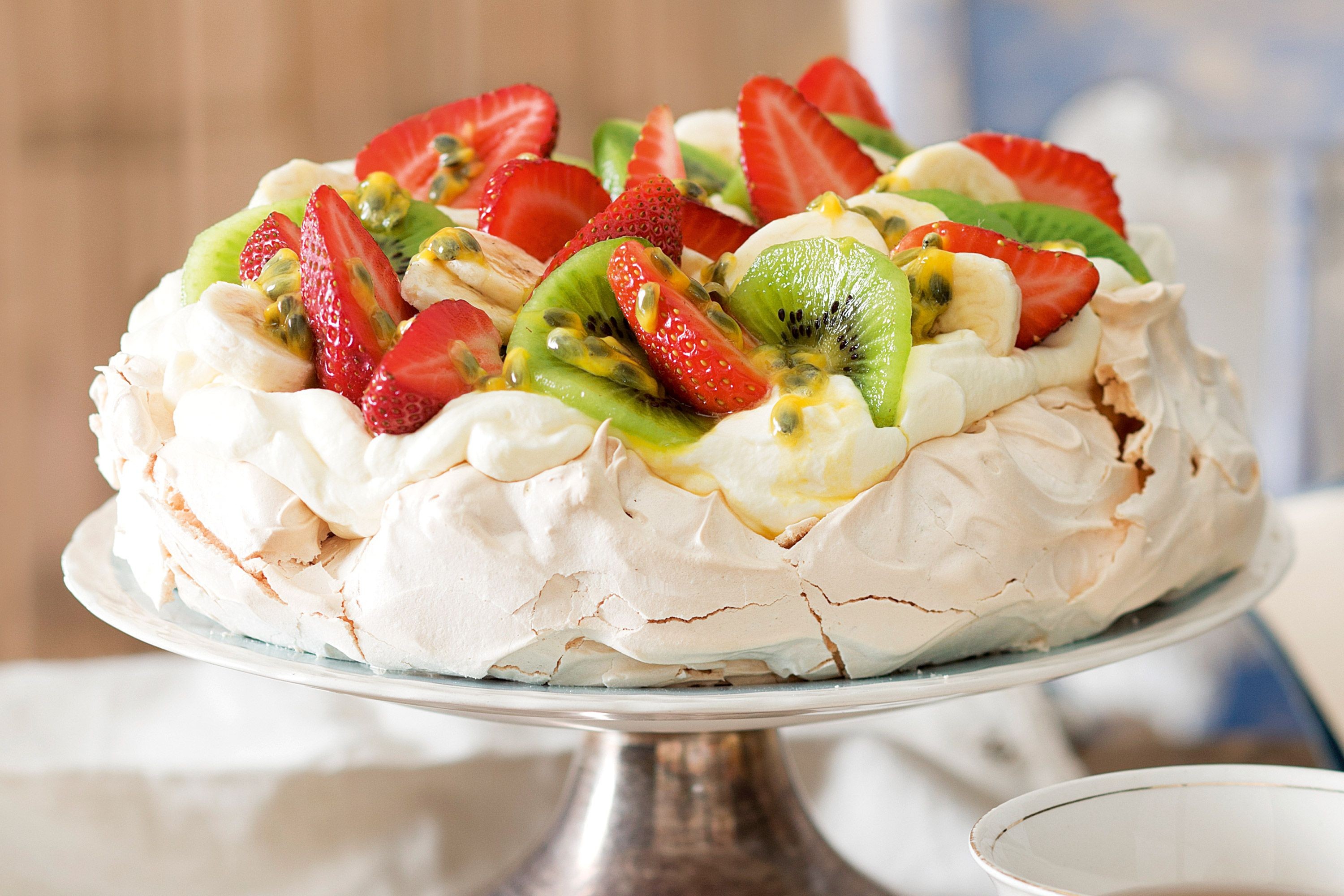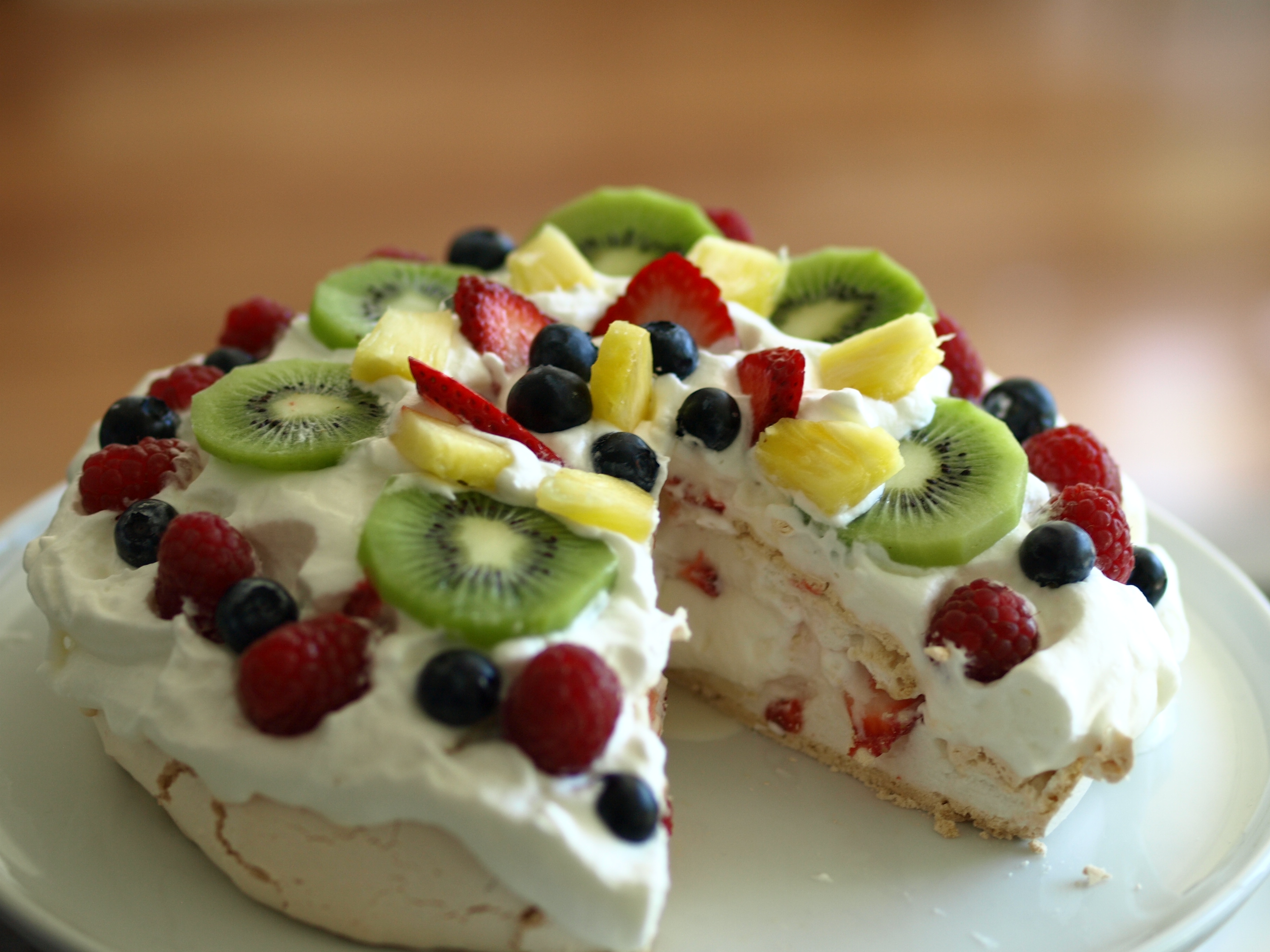Indulge in the delectable flavors and rich history of the iconic Australian pavlova. This meringue-based dessert, with its crisp exterior and fluffy interior, has captured the hearts and taste buds of Australians and dessert enthusiasts worldwide. Join us as we delve into the origins, key ingredients, and step-by-step instructions for creating an authentic Australian pavlova.
Explore variations, presentation techniques, and the cultural significance of this beloved dessert.
Whether you’re a seasoned baker or a novice in the kitchen, this guide will empower you to recreate the magic of the Australian pavlova in your own home. Let’s embark on a culinary journey that celebrates the flavors and traditions of this timeless dessert.
Pavlova History and Origins
The origins of the pavlova dessert are shrouded in mystery and subject to ongoing debate. Two primary theories exist regarding its creation:
The Australian Theory
According to this theory, the pavlova was invented in Australia in the early 20th century. It is believed to have been named after the Russian ballerina Anna Pavlova, who toured Australia and New Zealand in 1926. The dessert’s delicate and airy texture is said to have resembled Pavlova’s graceful dance movements.
The New Zealand Theory
The New Zealanders also lay claim to the creation of the pavlova. They maintain that the dessert was first created in 1927 by a chef named Herbert Sachse at the Wellington Hotel. The name “pavlova” was allegedly given to the dish by a hotel guest who remarked on its resemblance to the ballerina’s name.
Cultural Significance in Australia
Regardless of its true origins, the pavlova has become an iconic dessert in Australia. It is often served at special occasions, such as Christmas and Australia Day, and is considered a symbol of Australian cuisine.
Key Ingredients and Variations
The classic Australian pavlova relies on a few essential ingredients to achieve its iconic light and airy texture. Understanding these components and their variations opens up a world of possibilities for customizing this delectable dessert.
Essential Ingredients:
- Egg whites: The foundation of the pavlova, egg whites are whipped until stiff peaks form, creating the airy structure that defines the dessert.
- Caster sugar: Gradually added to the whipped egg whites, caster sugar provides sweetness and helps stabilize the meringue.
- White vinegar: A small amount of white vinegar helps stabilize the meringue, resulting in a glossy and crisp exterior.
- Cornflour (cornstarch): A touch of cornflour thickens the meringue, preventing it from becoming too runny.
Variations
While the classic pavlova recipe remains a beloved favorite, variations have emerged to cater to diverse tastes and preferences.
Flavors:
- Vanilla: A classic and versatile flavor that complements the delicate meringue base.
- Lemon: A refreshing citrus twist that brightens the dessert with a touch of acidity.
- Chocolate: A decadent indulgence that adds a rich and velvety layer to the pavlova.
- Strawberry: A vibrant and fruity flavor that adds a pop of color and sweetness.
Toppings:
- Fresh fruit: A colorful and refreshing topping that complements the sweetness of the pavlova.
- Whipped cream: A classic pairing that adds a light and fluffy texture to the dessert.
- Chocolate shavings: A decadent and indulgent topping that adds a touch of sophistication.
- Caramelized nuts: A crunchy and flavorful topping that provides a satisfying contrast to the soft meringue.
Fillings:
- Lemon curd: A tangy and refreshing filling that adds a burst of flavor to the pavlova.
- Chocolate mousse: A rich and decadent filling that creates a delightful contrast to the light meringue.
- Fruit compote: A sweet and juicy filling that adds a vibrant and colorful element to the dessert.
- Whipped cream and berries: A classic and elegant filling that provides a refreshing and satisfying combination.
Tips for Selecting High-Quality Ingredients
- Use fresh, free-range eggs for the best flavor and texture.
- Choose fine caster sugar for a smoother meringue.
- Opt for white vinegar with a neutral flavor to avoid overpowering the pavlova.
- Use fine cornflour to ensure a smooth and even texture.
- For the toppings and fillings, select fresh, ripe fruit and high-quality chocolate and cream.
Step-by-Step Recipe
Crafting an exquisite Australian pavlova is an endeavor that requires precision and attention to detail. Follow this step-by-step guide to master the art of creating this delectable dessert.
Before embarking on this culinary adventure, ensure you have all the necessary ingredients and equipment. You will need:
- 6 large egg whites, at room temperature
- 1 1/2 cups caster sugar
- 1 teaspoon cornflour
- 1 teaspoon white vinegar
- 1 teaspoon vanilla extract
- 250ml thickened cream
- Fresh fruit, such as berries, kiwi, or passionfruit
Step 1: Preparing the Egg Whites
Begin by separating the egg whites from the yolks. Ensure there is no trace of yolk in the whites, as this will hinder the whipping process. Using a clean glass or metal bowl, whip the egg whites on medium speed until soft peaks form.
Step 2: Adding Sugar
Gradually add the caster sugar, one tablespoon at a time, while continuing to whip the egg whites. The mixture will become glossy and stiff. Continue whipping until firm peaks form. Test the peaks by inverting the bowl; the whites should hold their shape without moving.
Step 3: Incorporating the Cornflour and Vinegar
In a small bowl, whisk together the cornflour and white vinegar. Add this mixture to the whipped egg whites and beat until just combined. This will help stabilize the pavlova.
Step 4: Baking
Line a baking tray with parchment paper and draw a 20cm circle in the center. Spread the meringue mixture evenly within the circle, forming a shallow bowl shape. Bake in a preheated oven at 120°C (100°C fan-forced) for 1 hour and 15 minutes, or until the pavlova is crisp on the outside and slightly marshmallowy on the inside.
Step 5: Cooling and Assembling
Turn off the oven and leave the pavlova to cool completely inside with the door slightly ajar. This will help prevent the pavlova from cracking. Once cooled, transfer the pavlova to a serving plate. Spread the thickened cream over the pavlova and top with fresh fruit of your choice.
Troubleshooting Tips
If your pavlova cracks during baking, it may be due to over-beating the egg whites or not baking at a low enough temperature. If the pavlova is not crisp on the outside, it may need to bake for a longer period.
Serving and Presentation

In Australia, pavlova is traditionally served as a dessert after dinner. It is often presented on a large platter or cake stand, and topped with whipped cream and fresh fruits. The most common fruits used are strawberries, raspberries, and blueberries, but other fruits such as kiwifruit, passionfruit, and mango can also be used.
Pavlova can also be presented in more elegant and creative ways. For example, it can be shaped into individual portions, or it can be decorated with edible flowers or chocolate shavings. It can also be served with a variety of sauces, such as chocolate sauce, caramel sauce, or fruit coulis.
Suitable Accompaniments
Pavlova is a versatile dessert that can be served with a variety of accompaniments. Some of the most popular accompaniments include:
- Whipped cream
- Fresh fruits
- Chocolate sauce
- Caramel sauce
- Fruit coulis
When choosing accompaniments for pavlova, it is important to consider the flavors of the other ingredients. For example, if you are using a sweet fruit coulis, you may want to use a less sweet whipped cream. Alternatively, if you are using a tart fruit coulis, you may want to use a sweeter whipped cream.
Cultural Impact and Significance
Pavlova holds a prominent place in Australian culture, symbolizing national pride and celebration. It is an indispensable dessert at gatherings, evoking nostalgia and a sense of community.
Pavlova’s association with Australia extends beyond its culinary appeal. It represents the country’s vibrant culinary scene, where traditional desserts meet innovative flavors and techniques.
National Identity
Pavlova is deeply ingrained in Australian identity. Its appearance at events like the Australian Open tennis tournament and Anzac Day commemorations underscores its significance as a national symbol.
The dessert’s airy lightness and delicate sweetness embody the Australian spirit of optimism and resilience, making it a beloved icon of the nation.
Anecdotes and Stories
The cultural impact of pavlova is evident in countless anecdotes and stories shared by Australians.
One popular tale recounts a competition held in 1926 to create a signature dessert for Australia. The winning entry, a meringue-based confection, was named after the famous Russian ballerina Anna Pavlova, who was touring the country at the time.
Last Point
As we conclude our exploration of the Australian pavlova recipe, we hope you feel inspired to create this delightful dessert in your own kitchen. Remember, the joy of baking lies not only in the final product but also in the process of creating it.
Embrace the artistry of meringue-making, the precision of folding, and the satisfaction of assembling this culinary masterpiece. Whether you’re sharing it with loved ones or savoring it solo, may your Australian pavlova bring joy and a taste of Down Under to your table.
Q&A
What is the history behind the Australian pavlova?
The origins of the pavlova are shrouded in mystery, with competing claims from Australia and New Zealand. However, both countries share a deep love for this dessert, which has become a symbol of their culinary heritage.
What are the key ingredients in a traditional Australian pavlova?
The essential ingredients for an Australian pavlova are egg whites, caster sugar, white vinegar, and cornflour. These ingredients are whipped and baked to create the signature crisp exterior and fluffy interior.
How can I prevent my pavlova from cracking?
To prevent your pavlova from cracking, ensure your oven temperature is accurate and avoid opening the oven door during baking. Additionally, allowing the pavlova to cool slowly in the oven with the door slightly ajar can help prevent cracking.
What are some variations on the classic Australian pavlova?
The classic pavlova can be transformed with a variety of flavors and toppings. Popular variations include adding passionfruit pulp, berries, or chocolate shavings. You can also experiment with different flavored whipped creams or sauces to complement the pavlova.

